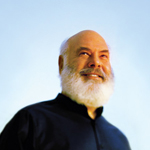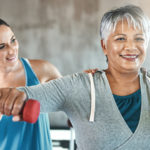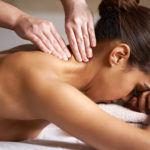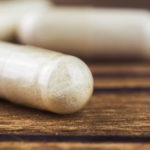Osteopenia
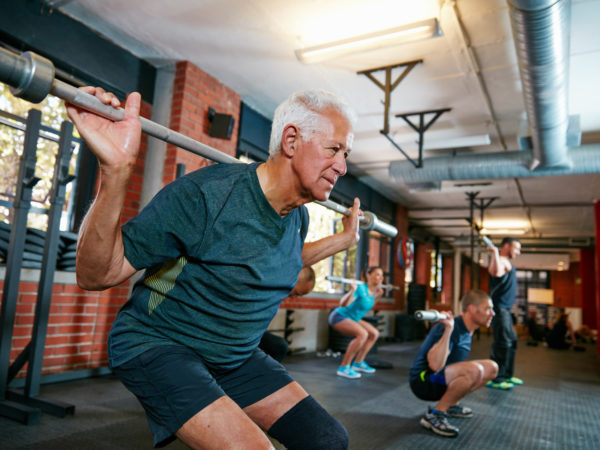
What Is Osteopenia?
Osteopenia refers to having bone mineral density (BMD) that is below normal levels but not low enough to be classified as osteoporosis. Bone mineral density is an indication of the level of minerals in the bones, which shows their strength and density. Having osteopenia means there is a greater chance of developing osteoporosis, a condition where bones are weak and fractures can occur.
What Are The Causes Of Osteopenia?
Bones are constantly being remodeled by the body, and they naturally become thinner as people grow older because, starting in middle age, existing bone is reabsorbed by the body more quickly than new bone is made. This causes bones to lose minerals, heaviness (mass), and structure, making them weaker and more prone to breaking, leading to osteopenia. All people begin losing bone mass after they reach peak BMD at about 30 years of age. The thicker your bones are by about age 30, the longer it takes to develop osteopenia or osteoporosis.
Some people who have osteopenia may not have had significant bone loss; they may just naturally have a lower bone density. Osteopenia may also be the consequence of other medical conditions, disease processes, or medications. Women have a much greater chance of having osteopenia and osteoporosis than men. Women have a lower peak BMD and the loss of bone mass speeds up as hormonal changes take place during menopause. In both men and women, the following factors can all contribute to osteopenia:
- Eating disorders or metabolism problems that do not allow the body to take in and use enough vitamins and minerals
- Chemotherapy, or medications such as steroids used to treat a variety of conditions, including asthma
- Exposure to radiation.
Who Is Likely To Get Osteopenia?
Having a family history of osteoporosis, being thin, being Caucasian or Asian, lack of adequate physical activity, smoking, regular consumption of sodas, and drinking excessive amounts of alcohol also increase the risk of osteopenia and, eventually, osteoporosis.
What Are The Symptoms Of Osteopenia?
Until you actually break a bone, osteopenia has no defining symptoms. You notice no pain or change as the bone becomes thinner, although the risk of breaking a bone increases as the bone becomes less dense.
How Is Osteopenia Diagnosed?
Osteopenia is diagnosed with a bone mineral density test, the most accurate being a dual-energy X-ray absorptiometry (DEXA) scan. DEXA is a form of X-ray that can detect as little as 2% of bone loss per year. A standard X-ray is not helpful in diagnosing osteopenia due to lack of sensitivity. Screening for osteoporosis is recommended for women age 65 or older. Women ages 60 to 64 should be screened if they also have at least one risk factor in addition to menopause. Risk factors include:
- Being Caucasian or, to a lesser degree, Asian. A family history of osteoporosis
- Being thin
- Long-term use of corticosteroids, such as prednisone or hydrocortisone for inflammatory conditions, or anticonvulsants, such as carbamazepine (Tegretol), phenytoin (Dilantin), or gabapentin (Neurontin) for pain or seizures
- Eating disorders or diseases that affect the absorption of nutrients from food
- Being inactive or bedridden for a long period
- Smoking
- Drinking excessive amounts of alcohol or caffeine
- Having a diet low in calcium or vitamin D.
Many men don’t think they are at risk for osteopenia or osteoporosis, since these are commonly considered to be conditions of older women. Because men have a higher peak bone mineral density than women at middle age, osteopenia and osteoporosis tend to happen at an older age in men. However, aside from the hormonal change in women as they go through menopause, the risk factors of osteopenia are risks for men as well as women. Men are also at risk if they have low levels of testosterone. Talk with your health professional if any of the risk factors apply to you.
What Are The Conventional Treatments?
Osteopenia is treated by taking steps to prevent further bone loss and the progression to osteoporosis. For a few people, this will include taking medication, but simple lifestyle changes can help lessen the bone loss that leads to osteopenia and osteoporosis.
Diet is very important to bone development, and calcium is the most critical mineral for bone mass. Your best sources of calcium are milk and other dairy products, green vegetables, and calcium-enriched products.
Your health professional may also want you to take a calcium supplement, often combined with vitamin D to help prevent osteopenia. Vitamin D helps your body absorb calcium and other minerals. It is found in eggs, salmon, sardines, swordfish, and some fish oils. It is added to milk and can be taken in calcium and vitamin supplements. In addition to what you take in from food, your body makes vitamin D in response to sunlight.
Exercise is also important in maintaining strong bones, because bone forms and remodels in response to physical stress. Weight-bearing exercises such as walking, hiking, and dancing are all good choices to prevent osteopenia. Adding exercise with light weights or elastic bands can help the bones in the upper body. Talk to your health professional or a physical therapist about starting an exercise program.
In addition to diet and exercise, quitting smoking and avoiding excessive use of alcohol, caffeine and sodas will also lessen your risk of bone loss.
There are medications available to treat bone thinning, but these are more commonly used if you have osteoporosis. Medications that may be used for osteopenia include bisphosphonates, raloxifene, and hormone replacement.
What Therapies Does Dr. Weil Recommend?
- Get enough calcium. Choose high quality, organic dairy products such as yogurt and milk. Eat more sardines (with bones), dark green vegetables like collard greens, bok choy and broccoli, whole soy products like tofu, and calcium-fortified soy milk and orange juice. Consider taking a calcium supplement if you are not eating at least three servings of dairy per day and/or calcium-fortified foods, if you are postmenopausal or if you have a family history of osteoporosis.
- Get enough vitamin D. Dr. Weil recommends supplementing with 2,000 IU daily for adults.
- Decrease your sodium intake. Avoid salty processed foods and fast food. Don’t salt your food before tasting it.
- Eat plenty of vegetables and fruit. Potassium, magnesium, vitamin C and beta carotene (found in fruits and vegetables) have been associated with higher total bone mass. A diet rich in vegetables and fruit and moderate in animal protein and grains may minimize the acid-ash residue of the diet.
- Limit caffeine intake.
- Avoid alcohol or drink only in moderation.
- Increase weight-bearing activities, such as walking, weight training and calisthenics. Try to do at least 30 minutes of exercise most days of the week.
- Eat magnesium-rich foods every day. These include spinach, tofu, almonds, broccoli and lentils. Pumpkin seeds and sunflower seeds are also good sources of magnesium.
- Eat vitamin K-rich foods every day. The best sources are green leafy vegetables (see the calcium-rich greens listed above), but most vegetables are good sources.



